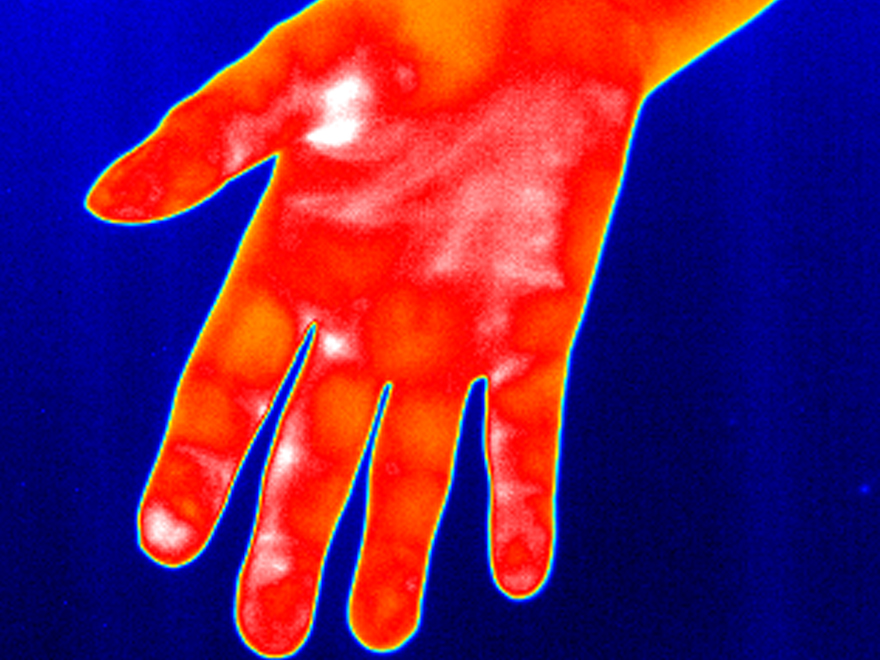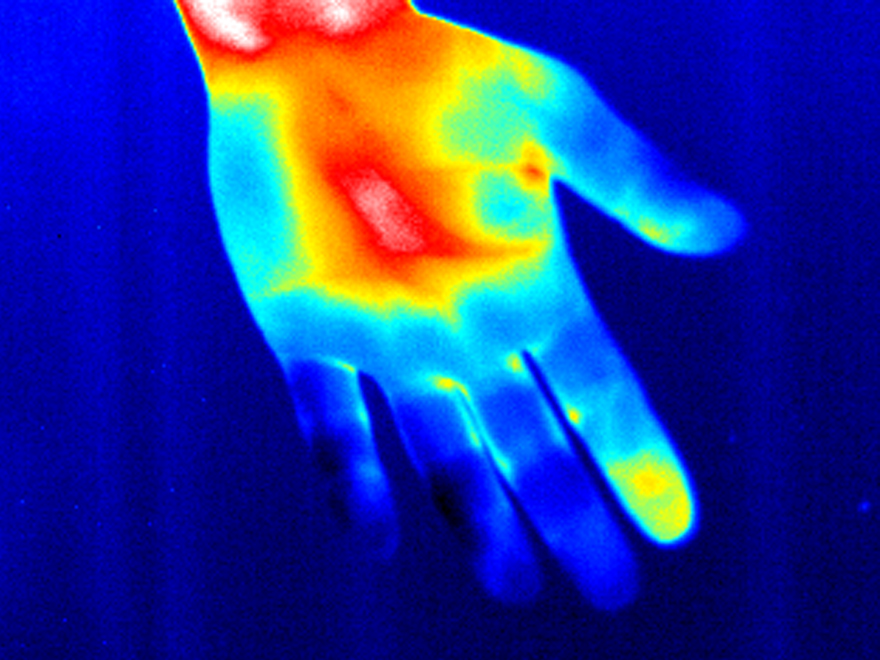The human body often reacts to diseases with increased temperature. Depending on the disease, the temperature increase can just occur locally, e.g. with infections. Because the blood flow in the body is also used for distributing temperature, areas that suffer from a decreased blood circulation can be detected over the temperature distribution. Commonly, uncooled infrared sensors can be used in medicine to diagnose circulatory disorders or local infections by displaying the temperature distribution close to the surface. Apart from the diagnosis by temperature or temperature distribution on the human body there are also procedures that determines the temporal change of the temperature after warming or cooling the body from the outside. This infrared thermography method is suitable for several preventive medical checkups, for example in breast cancer detection in which temperature changes are monitored before and after cool-off periods. Because blood circulation and heat emission of diseased tissues vary, many diseases can be detected at early stages. The measurement of the temperature is a purely passive measurement technique that is non-invasive and doesn’t inconvenience the patient. The measurement of the temporal temperature behavior by warming or cooling is also just a small inconvenience for the patient.
Uncooled infrared sensors can measure the near-surface temperature without contact, even over long distances. This principle is used, among other things, for the purpose of medical examination of aircraft passengers during border control for fever with a thermal imaging camera to avoid global spreading of diseases. Another application of this principle can be found in a doctor's practice, where the body temperatures of patients are determined quickly and reliably from a greater distance. Infectious patients can thus be accommodated in a separate waiting room and the risk of infection of other patients can be significantly reduced. The selection can be made automatically and anonymously as a medical precaution.
Because of the limited temperature range of the human body and thereby minor temperature differences, all medical applications using infrared sensors need a good thermal resolution (low NETD value).

